|
|
|
Forgotten Temples of Kashmir
Photo series Part-10 An effort to preserve and record Hindu cultural and religios heritage of Kashmir VEJIBROR…..AN ANCIENT RELIGIOUS PLACE 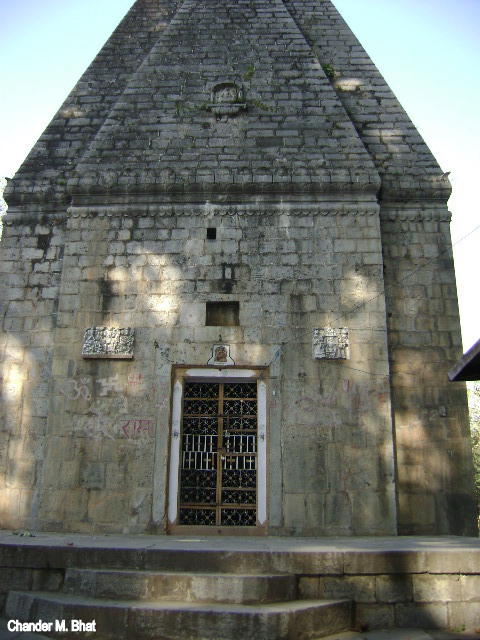 Exclusive images and report from a remote village in Kashmir provided for Shehjar by Chander M. Bhat |
|
It is said to have been founded by King Vijaya (K.E. 2986-94), who was a local nobleman, around the shrine of Vijayeshvara. The shrine however, existed long before, as Ashoka, who prededed Vijaya, had boult a stone enclosure around it and built two Asokesvara temples within the same. Being on the way to Mattan, the shrine of the Sun-god, Shri Amarnath Cave and to several passes leading across the Pir Panchal to the plains, the town attracted many, including leaders of troops who caused suffering. Kalasa (1063-89 AD.) set fire to the residence of his father Ananta who had retired to Vijayesvara. The town, says Raj Tarangni, was reduced to ashes. There was considerable military activity in Vijeyesvara in Kalhana’s own time. The present temple was built by Maharaja Gulab Singh using stones from the ruins of the ancient shrine of Vijayeshwari. The shrine, dedicated to the god of victory, is known as vijayesvara, and the area around it as Vijaesvarksetra. The Kashmiri name Vejbror is derived from Vijayabhattaraka (the suffix bhattaraka meaning ‘god’). Bhattaraka has been contracted to bror, as in Bhattarakanadvala (Kashmiri Brarinambal). Vijibror has become Bijbehara for official records.1 There is a mention of this place in Nilmatpurana also as under: Gangodbheda, according to Kalhama and Nilmatpurankara was a very sacred place under the foot of the Bheda Mountain of the Peer Panjal Range in western Kashmir. Gangodbheda Mahatmya gives a vivid description of this sacred place and the days of its pilgrimage. It also gives an account of its origin. Rishi Palustya, doing a long penance in the land of Sati, had made the divine Ganga gust forth near him from Mount Himvat for the purpose of his sacrifice. After completing his worship, the sage wishes to discharge the river. He was stopped by a divine voice of Goddess Saraswati from the sky. She told the saint that the stream has its source in the mountain in the forest called Bheda and at place would arise the holy Gangodbheda on the top of hill where the ground level extended; a great pond full of pure water would be formed without a dam and removed from the water of torrents. At its eastern foot, a stream called Abheya, a purifier from all sins is to issue which neither fails to flow nor leaps down over the steep slope. The divine voice then informed the Rishi that the holy Gnaga would manifest itself in this shape only for 10 days each month, flowing for the remainder period both the heaven and the hell. At the same time, he is granted a boon. Palustya, there upon praised the spiritual powers of the river and prayed that it might rest for every by his side. His boon was granted and the Gangodbheda Tirtha was created. To obtain the slight of the Goddess whose voice he had heard, the Rishi undertook a hard penance. After a thousand years Saraswati…Goddess of knowledge appeared to him from the sky in the form of a flamingo. Having been worshipped by him on the 8th and 9th he bright half of Chaitra the Goddess explained her sixfold nature. With reference to this, the sage gave her the name of Bheda and proceeded to worship her as Hanswageshwari…Bheda on 14th and 15th of bright fortnight of Chaitra. Eversince the Goddess has been worshipped at the Gangodbheda Tirtha on the 8th, 9th, 14th and 15th day of the bright fortnight of Chaitra. The Gangodbheda Mahatmya also mentions about a neighbouring shrine of Govardhana Vishnu near which no snow ever falls for a distance. A miraculous image of Yama, called Aujas set up for the Rishi at the same place, is also referred to.2 There are other shrines in Bijbehara town as Zaya Mata and Vezja Mata, both the shrines are on the hillock, on the right side of national highway. The temple of Vezya Devi was damaged in the year 1947 and at present there are no remains of the temple. The Shrine of Mata Zaya Devi was ransacked during the communal riots of 1986 but the then governor of J & K state restored the murties in this temple also along with the other two temples viz old Vijeshwar temple & New Vijeshwer temple which too were looted and ransacked. One Kah Kah Pal used to be in the lawns of new Vijeshwer temple but the same is missing. Notes and References:
|
|
An ancient icon outside the temple in open |
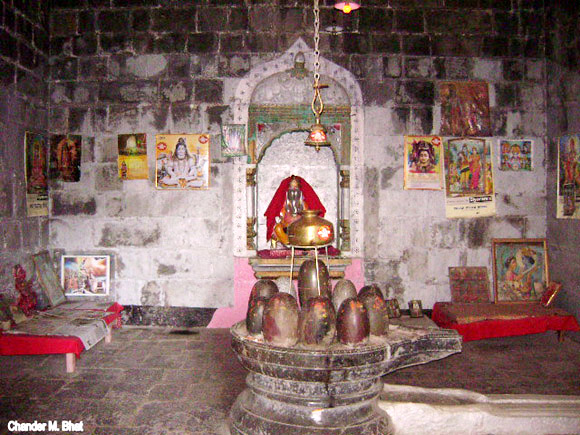 Inside view of the main temple.The hand that gives, gathers. |
|
a Beautiful stone carved Icons inside the temple complex |
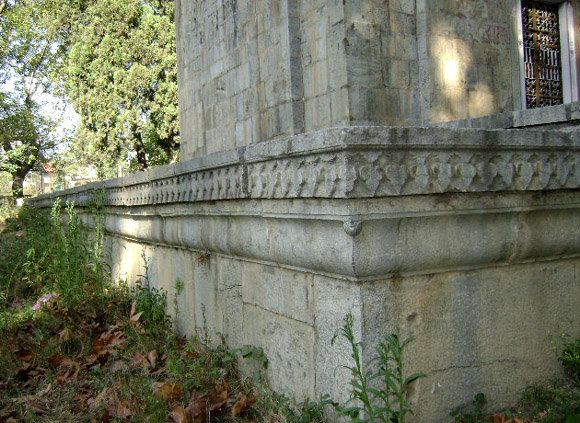 Base of the temple |
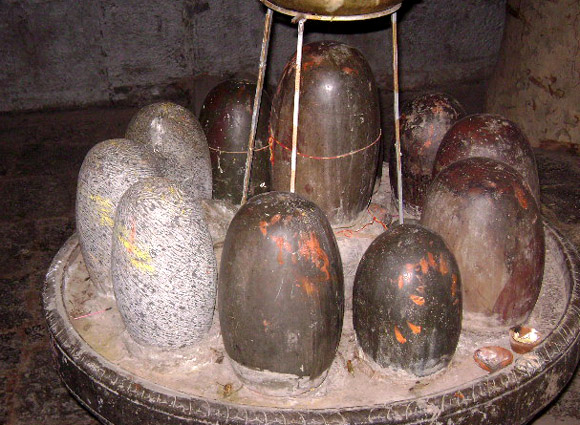 Close view of the sanctum sanitorium. No one can rob us of the devotion of our devotees |
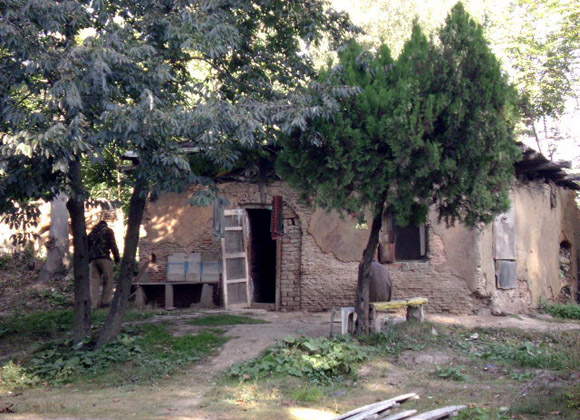 Dharamshala inside the lawns of the temple |
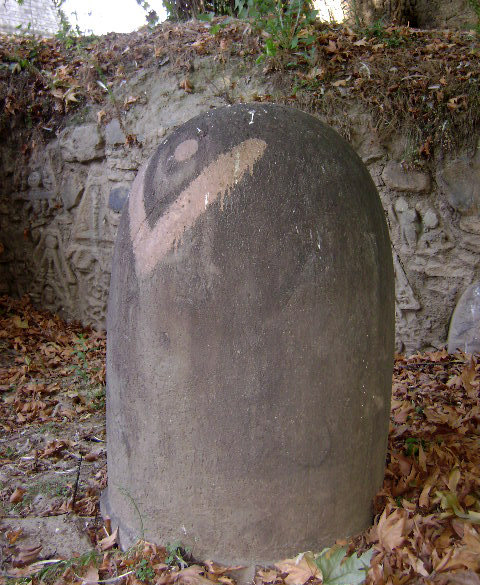 aShiv Linga in open on the bank of Vitasta. Once there was KahKah Pal near this linga but the same is missing |
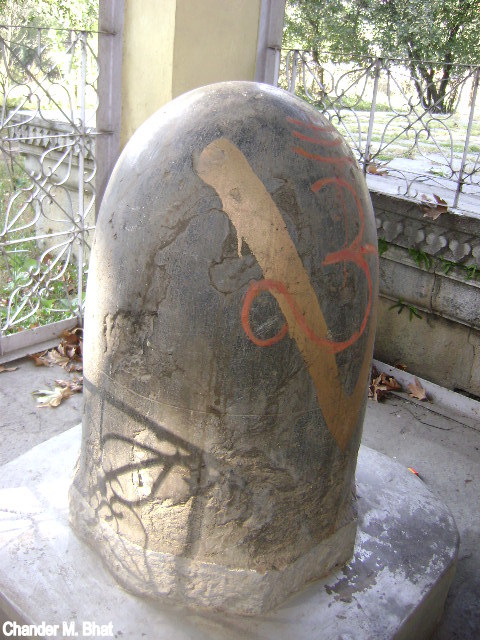 Another Shiv Langan outside the temple. The scars on my face can tell you the story of my exixtence |
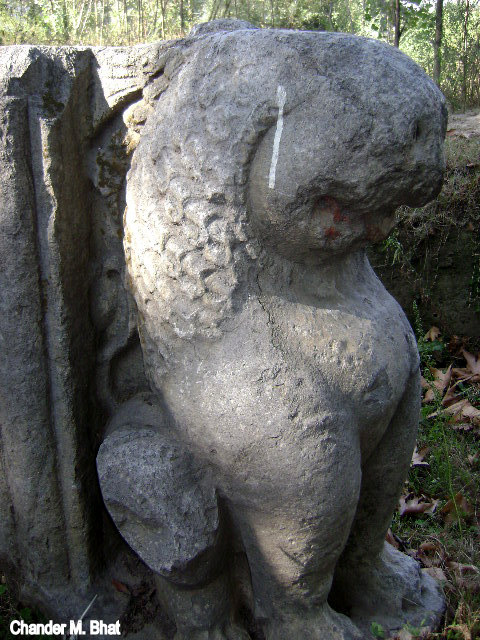 Brashib outside the main temple |
|
Broken icons inside the temple. Pages of history now scattered and struggling for survival |
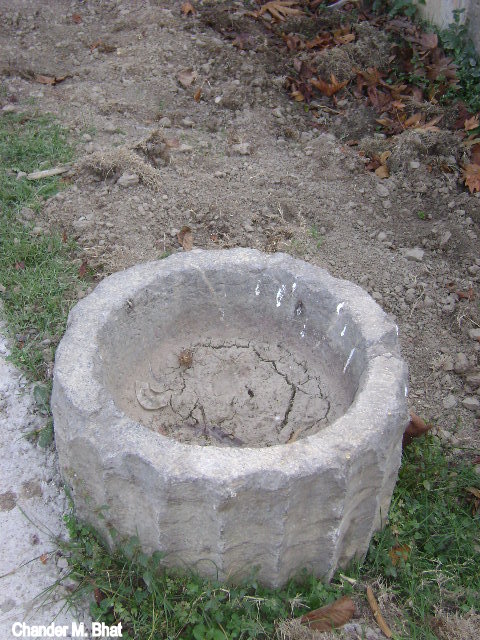 Kanz inside the temple complex. A full cup must be carried steadly |
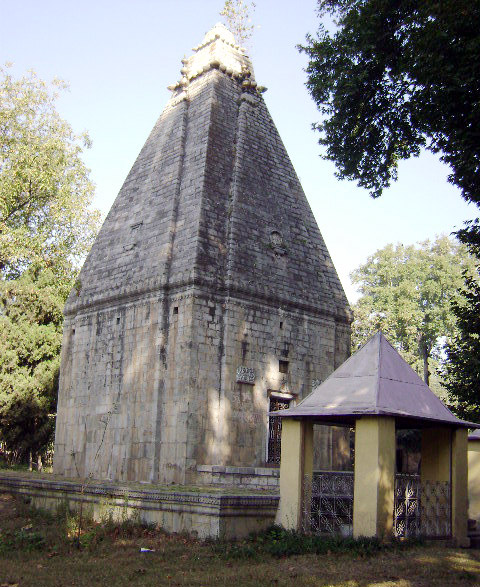 Main temple made of unique kind of stones |
|
|
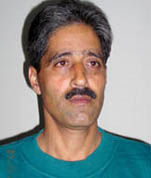 *Born
on 20th March, 1960 in Murran a village in North Kashmir, Chander M.
Bhat is presently working as an Assistant Supdt. Posts, in Department of
Posts, Govt. of India. His articles regarding Posts and of
non-political nature stand widely published in various papers and
magazines of the country. A booklet 'How to Collect Stamps" published by
the Department of Posts, has earned him genuine accolades. He worked on
the project of tracing the roots of his co-villagers and of the village
Murran, resulting into the culmination of a widely acclaimed book
"Murran -My Village". Man with depth, Chander M. Bhat has also another
book, "Ocean by Drops" (collection of poems) in his vase having colorful
poems. His book "Ancient History of Jammu and Kashmir", confirms his
researching capability. Various research papers like "The Splendor that
is Amarnath" and "Vitasta" The Sacred River of Kashmir" are valuable
additions to his works that has proved very fruitful and guiding force
in the exile period of Kashmiri Pandits community of which the author is
also a member. *Born
on 20th March, 1960 in Murran a village in North Kashmir, Chander M.
Bhat is presently working as an Assistant Supdt. Posts, in Department of
Posts, Govt. of India. His articles regarding Posts and of
non-political nature stand widely published in various papers and
magazines of the country. A booklet 'How to Collect Stamps" published by
the Department of Posts, has earned him genuine accolades. He worked on
the project of tracing the roots of his co-villagers and of the village
Murran, resulting into the culmination of a widely acclaimed book
"Murran -My Village". Man with depth, Chander M. Bhat has also another
book, "Ocean by Drops" (collection of poems) in his vase having colorful
poems. His book "Ancient History of Jammu and Kashmir", confirms his
researching capability. Various research papers like "The Splendor that
is Amarnath" and "Vitasta" The Sacred River of Kashmir" are valuable
additions to his works that has proved very fruitful and guiding force
in the exile period of Kashmiri Pandits community of which the author is
also a member.Presently the author is working on "OOL - THE NEST" a six volume project on all the 595 (each volume of about 2500 pages)Kashmiri Pandit villages of Kashmir. POSTED BY ...........VIPUL KOUL |
Monday, October 1, 2018
Forgotten Temples of Kashmir
Subscribe to:
Post Comments (Atom)


No comments:
Post a Comment